Encouraging science literacy in all classes
I’ll admit that while I was a strong student in most areas, I had a very uneven interest in my subjects; I was drawn to reading and writing, and I shunned my science and math classes. Science textbooks just didn’t engage me the way a short story did.
Why was I failing to engage with STEM? I remember memorizing formulas but rarely having the opportunity to engage with scientific ideas and processes.
This changed for me though when I reached college and I took a course called “Science in Literature,” co-taught by a English professor and a physicist. This course used literature to expose me to topics like logic and chaos theory, and it had me read fiction with an entirely new mindset. The course culminated in a reading of the play Arcadia, which pitted scientific concepts against literary passion, arguing that both, in the end, are necessary.
This course truly changed my life when I decided to become a Biology minor.
Benefits of Combining STEM & Literacy
There are major benefits to combining literacy and STEM. Strong literacy skills are necessary in STEM fields where one needs an ability to read informational texts, comprehend domain-specific vocabulary, think critically, and write clearly. Combining reading and STEM can rouse students’ interest in STEM fields much earlier in their educational careers.
At CommonLit, we believe in integrating STEM topics into ELA instruction, literacy into STEM courses, and both STEM and ELA in social studies classes in order to build up better readers and thinkers. We currently have 5 informational text sets dedicated to STEM, with more on the way:
- Nature & Conservation (Learn about how the natural world interacts with itself and how people impact the planet with this science-based text set.)
- Psychology and the Mind (The mind has fascinated and mystified humans for millennia. Delve into the science behind the brain with these works on philosophy, foundational psychology, and scientific studies.)
- Science of the Body (Introduce students to how the body looks and works with these texts on biology and genetics.)
- Space (Introduce students to the wonders and science of space, from the basics of our solar system to the pioneers and technological achievements of space exploration.)
- STEM (Explore popular STEM articles related to science, math, technology, and scientists at work.)
Here’s my 10 favorite STEM texts from CommonLit. These will help you plan lessons that will not only make your students better readers but improve their scientific literacy, all while piquing their interest in STEM topics.
Introducing STEM
“The Scientific Method” by Barrett Smith
Grades 5–6
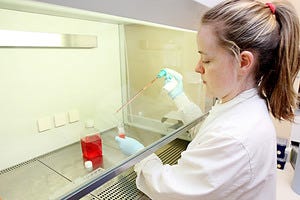
This text explaining the scientific method is a foundational piece for building scientific literacy. This article is great because it breaks the scientific method down into its digestible parts and uses a sample experiment to guide students through the process. It also introduces domain-specific words and includes a small glossary to ensure students understand the fundamental concepts of an average scientific experiment. This article can be great for building background knowledge while testing vocabulary.
Nature & Conservation
“Tiny Plastic, Big Problem” by Alison Pearce Stevens
Grades 5–6
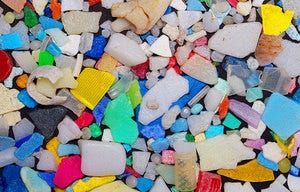
Students are sometimes told that their everyday actions can have a larger impact. What they often don’t see is a big-picture look at the consequences of inaction. This article uses a narrow but poignant lens to shine a light on the topic of conservation. It can serve as a great jumping off point for class discussions on conservation, human choices, technology, the future, and problem-solving.
“Most Ivory for Sale Comes from Recently Killed Elephants — Suggesting Poaching Is Taking Its Toll” by Rachel Nuwer
Grades 9–10
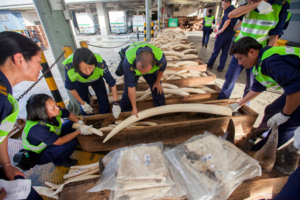
This article introduces students to conservation by discussing the modern issue of elephant poaching. What makes the article great is that it cites a study published in a scientific journal, helping students build their background knowledge on the language and processes of these studies. Students can track the study and the author’s interpretation of its findings, making for a rigorous but compelling assignment.
Psychology of the Mind
“Fear Prompts Teens to Act Impulsively” by Laura Sanders
Grades 7–8

Teens love to read articles that relate to their own lives and experiences. This article checks that box while also helping teenagers learn more about the makeup of their own brains, feelings, and choices. This is another article that cites a scientific experiment, improving students’ comfort with understanding the scientific process. It also relates science to real-world problems teens face, showing how STEM can help solve complex issues.
“The Science of Solitary Confinement” by Joseph Stromberg
Grades 11–12

Engage advanced students with a text that combines psychology, science, and social concerns by examining the effects of solitary confinement on prisoners. This article provides a fascinating glimpse into this controversial topic through a scientific lens. It’s great for helping students build their critical thinking skills by using meaty scientific research to back up their thoughts, which in turn helps prepare them for college and future careers.
Science of the Body
“Let’s See What You’re Made Of” by BirdBrain Science
Grades 5–6
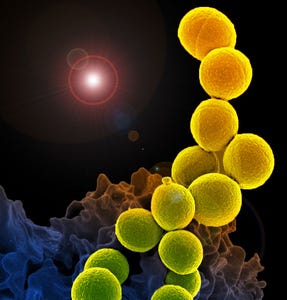
This article introduces students to some of the basic vocabulary words and concepts used in biology. It is a great foundation for a low-level unit on genetics, and it can be paired with other BirdBrain Science articles in the Science of the Body text set for this purpose. Teachers in every subject can find a creative use for this article — whether it’s for building background knowledge, studying people’s experiences in the world, or understanding central ideas.
“Immunity” by Kim Roberts
Grades 7–8
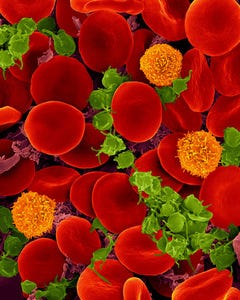
It’s not very often that poetry and science intersect, but this text is a beautiful combination of the two. In this poem, the speaker describes T-cells, which are “defender” blood cells critical to the body’s immune responses. The poem creatively leads the reader to imagine T-cells as soldiers lining up for battle drills, personifying the cells in a way that helps the reader better understand their purpose. This text could be used in science class to reinforce the topic of cells and what they’re needed for, or it could be discussed in an English class to discuss the literary devices the writer uses.
Space
“The Women of Hidden Figures” by Jessica McBirney
Grades 7–8
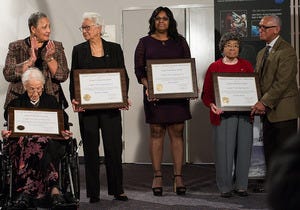
This biographical article does a lot all at once: it celebrates women in STEM, touches on a pop culture phenomenon, and combines social studies with STEM and literacy through the historical lens of civil rights and technological advancement. This article will leave your students feeling inspired to make their own mark in STEM. It works well in a larger unit on the role of women in society, the Space Race, or the Civil Rights Movement.
“Should We Terraform Mars?” By Paul Scott Anderson
Grades 9–10

This persuasive essay will really get students thinking about a complex, debatable topic, igniting electric class discussions and offering them a unique opportunity to examine rhetorical craft. This essay can build students’ persuasive skills, as well as their familiarity with scientific concepts and vocabulary. It works well in units on rhetoric, space, morality, and the future.
Bonus: Science Fiction
You can also build science literacy and appreciation in your ELA classroom by teaching science fiction or using scientifically-themed anchor texts.
Check out our Science Fiction genre in English and Spanish or explore our book pairing recommendations for World Without Fish, Code Talker, and Frankenstein.
Your Turn
If you’re a humanities teacher, how can incorporating STEM-themed texts enrich your students’ readings? If you’re a STEM teacher, how can integrating literacy practice into your lessons deepen students’ understanding?


